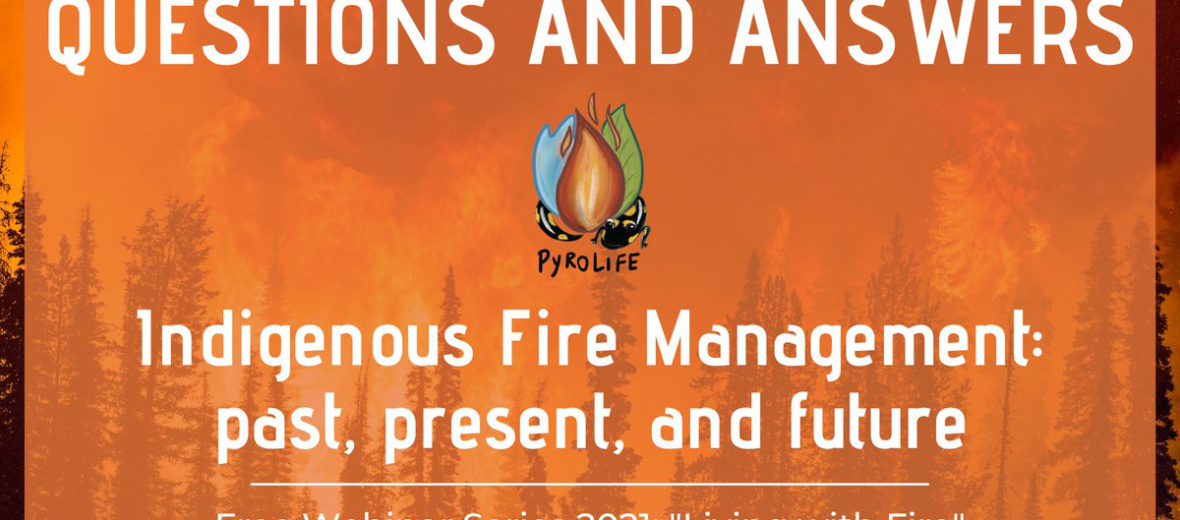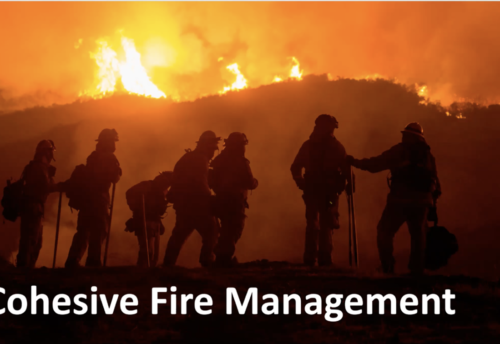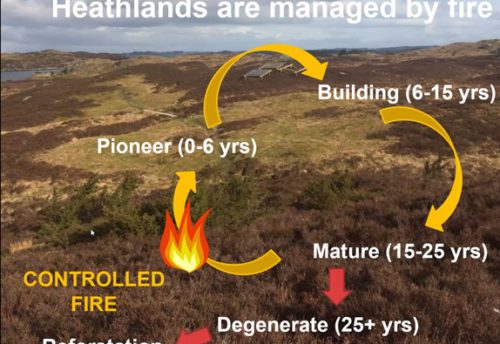
The conversations with Simon Lambert, Amy Cardinal and Brady W. Highway was so inspiring and stimulating, the questions kept pouring in! So… Let’s go to the questions from the participants
1/8: Why would you say that indigenous knowledge and science are two different things? I personally would say both are about the creation of knowledge, no matter the approach.
Amy Cardinal : Agreed! We were speaking here about ‘Western’ or ‘Euro-centric’ knowledge – which often is portrayed as the only scientific method. However, there’s many different ways to create knowledge. It depends on your interpretation of the word ‘science’. But I agree and consider Indigenous knowledge a science. I’ve been in many meetings though where people disagree, and refer to our knowledge as myths or legends.
2/8: I am curious how indigenous fire management can inform green transitions, considering that our real values lie in nature and community?
Amy Cardinal: Firesticks Alliance Indigenous Corp is working in carbon trading – basically trading cultural burning credits to fund sustainable Indigenous-led biodiversity programs. In Canada, there’s been a move to let fires burn in certain zones because it’s ‘natural’ which many indigenous groups are opposed to.
Ellen Whitman has done research that shows the boreal doesn’t regenerate from fire like it used to – fires burning too hot bc of climate change and fire suppression (increased fuel). Devastating for Ind Nations. Instead, keep the canopy and conduct understory burns to create mosaic
3/8: I’m wondering how Indigenous Guardians can help not only with fire management, but is there an advantage of that model for managing multiple values such as fire and wildlife? I’m thinking like the re-introduction of bison and fire at the same time.
Brady Highway: Precisely. Indigenous Guardians are a proven model with over 30 programs across the country, each of them tailored to local needs and environmental pressures. Follow for more!
4/8: Is there any written compilation of different techniques used by indigenous people?
Amy Cardinal: Not really, because there’s so much diversity. Frank Lake and I tried to touch on some of the techniques in our article https://cfs.nrcan.gc.ca/publications?id=39827
5/8: If any of you could suggest one topic for further research that would support your efforts to use fire to maintain your landscapes, what would it be?
Amy Cardinal: I think it’s critical in the next 5-10 years that we support Nations to learn from their Elders. They are the ones with the pre-colonial memory, and unfortunately many are passing away.
Precisely. Indigenous Guardians are a proven model with over 30 programs across the country, each of them tailored to local needs and environmental pressures. Follow @land_guardians for more!
Brady Highway: Good question. I would like to see how @land_guardians could support, and be supported by other Indigenous-led fire programs from around the world.
6/8 Are there any particularly exciting community engagement initiatives around indigenous knowledge and fire in Canada (or elsewhere) that are happening right now?
Amy Cardinal:We discuss a bunch in the Blazing the Trail booklet https://firesmartcanada.ca/product/blazing-the-trail-celebrating-indigenous-fire-stewardship/. Also follow @FiresticksA or the Indigenous People’s Burning Network in California.
7/8: Amy, could you say a bit more about cultural severance? Did you mention the name of a scholar in connection with that concept?
8/8: For both Amy and Brady: Where do you draw the line between cultural burning and ‘Agency’ burning and does fire suppression fall into cultural burning at all? Or is there no line?




Leave a Reply